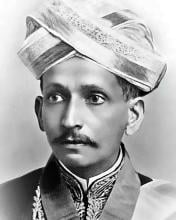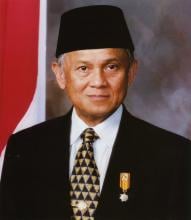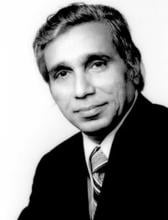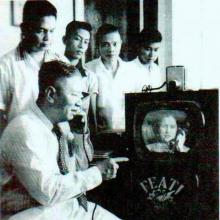Technology
News

02 Sep 2007
Information and Communication Technologies have revolutionised our lives in many ways and promise to continue doing so. This section will highlight ICT research and experts featured on ResearchSEA including the latest technologies and ICT for Development

01 Sep 2007
Researchers from the RIKEN SPring-8 Center in Harima and from the universities of Tsukuba and Tokyo have demonstrated that laser light of a single wavelength can induce reversible transformations in the molecular bond, leading to changes in a material’s magnetic properties.

29 Aug 2007
This APDIP e-Note explores the benefits of using FOSS applications in telecentres with case studies from Bangladesh, India, Pakistan, Brazil, Egypt and Sub-Saharan Africa.
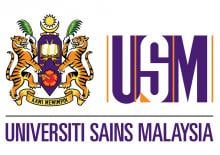
28 Aug 2007
Researchers in Universiti Sains Malaysia developed Bio-Coat from oil palm empty fruit bunches as an alternative to commercial geosynthetic and geotextile materials for slope protection, reinforced earth wall and other soil improvement uses.

26 Aug 2007
Researchers from Universiti Putra Malaysia have discovered a simple technique to immobilise the enzyme lipase onto a support providing a derivatised enzyme that shows a high capacity to resolve between chiral pairs. This ability aids in the synthesis of specific compounds in its pure form which is very much sought after by the chemical industry

24 Aug 2007
Ultrahigh-energy cosmic particles are an intriguing puzzle in high-energy physics, and RIKEN is involved in a project to solve it. RIKEN proposal for the second utilization plan of the Japanese Experiment Module (JEM) on board the International Space Station was recently accepted

24 Aug 2007
Yongyuth Yuthavong, Minister of Science and Technology of Thailand, with over 20 dignitaries including the director of Thailand’s National Synchrotron Radiation Center, visited SPring-8 (the world’s biggest synchrotron radiation facility) in Harima, Hyogo Prefecture.

22 Aug 2007
A new kabuli chickpea variety, Gokce, developed by the International Center for Agricultural Research in the Dry Areas (ICARDA), in collaboration with Turkish national scientists, has withstood severe drought in Turkey and produced an impressive yield in adverse weather conditions.

21 Aug 2007
Using nanotechnology, researchers have found a way to make tin harder and thus enabling it to be used in the automotive and electrical industries, not just in the food packaging. This may have implications for the future consumption of tin.

20 Aug 2007
The aim of the project is to facilitate electronic and written communication between people in East (Indian) and West (Pakistani) Punjab through the development of a Punjabi Language Transliteration Tool.

19 Aug 2007
TrichoGreen is a Trichoderma-infused compost which is also an effective biological control agent against the basal stem rot disease for palm oil. The production process is entirely organic, eliminates the need for burning, and is an excellent form of environmentally-friendly waste management.

17 Aug 2007
This center is the cooperative research hub between RIKEN and Olympus Corporation, one of the leading Japanese manufacturers of consumer digital cameras and medical and lifescience research instrument.

17 Aug 2007
Plant growth can be badly stunted by excess ions in the soil. This effect, called acid soil syndrome, can cause severe agricultural yield losses, especially in areas prone to drought. For this reason, a team of researchers from RIKEN and two Japanese universities are working to identify genes that regulate a plant’s tolerance of ions

17 Aug 2007
Researchers from RIKEN’s Frontier Research System, Wako, the Japan Science and Technology Institute, NEC Corporation and the US Massachusetts Institute of Technology have developed an architecture that allows tunable control over the qubits of a superconducting quantum computer.

14 Aug 2007
Researchers have built a system which can identify a person using their eyes and mouth as independent components of the identification process. Furthermore, its ability to track within ±45 degrees to right and left, and within ±15 degrees from frontal pose will foil any attempt to use a photo for identification purposes.

12 Aug 2007
Palm oil is rich in carotene. However current commercial production of edible oil results in the loss of carotenes. Now, researchers have found a way to recover carotenes from crude palm oil.

10 Aug 2007
Today’s high-tech devices would not exist without a good theory to predict how electrons move through semiconductor crystals. But gaps remain in the theory. Resolving these problems could lead to a more robust theory that enables new breakthroughs in electronics.

09 Aug 2007
jEnterprise is a real-time continuous network monitoring tool to prevent potential performance degradation or downtime. It provides intelligent troubleshooting and support for new protocols such as IPv6 to ensure coverage at all times and is the world's only cross platform enterprise level distributed network analysis and troubleshooting tool

08 Aug 2007
Two groups of scientists at A*STAR were awarded the Prestigious Engineering Achievement Award by the Institution of Engineers Singapore for their research in cognitive radio technologies to exploit the under-utilised television bands for wireless broadband services and a breakthrough system for measuring electromagnetic radiation in the environment

07 Aug 2007
Drug delivery systems need to maximize the therapeutic activity while minimizing negative side effects. Layered double hydroxide has great potential for a controlled release formulation. The second research is on Betulinic acid a natural product isolated from plants, which has potential as an anti-cancer agent.

07 Aug 2007
Almost 95 percent of enterprises in the Asia-Pacific region are SMEs. While ICT can benefit them, they have been slow to adopt ICT due to many reasons. This e-Primer, with a foreword by Kim Hak-Su discusses benefits ICT brings to SMEs, explores uses, surveys past policies and programmes and recommends policy options for interested governments.

06 Aug 2007
A grant has just been awarded to University Malaysia Sarawak for the development of a microarray which will allow simultaneous detection of all enterovirus serotypes in a single test, allowing rapid public health decisions on EV71 outbreaks. Current technologies are slow and tedious in that each virus serotype must be ruled out one by one.

06 Aug 2007
On June 27th, 2007, Tokyo University of Science signed an Academic Exchange Agreement with the University of Applied Sciences Jena in Germany.

05 Aug 2007
The researchers have found that despite the differences of disasters involved and their technologies, they exhibited common characteristics and that socio-technical disasters are not sudden cataclysmic events but evolved in phases with long developmental period.

02 Aug 2007
This recently completed project aimed to develop a mobile telemedicine system in Indonesia using existing Internet communication technology. This system will allow remote patients to receive a routine check-up using a mobile phone and local hospitals to respond faster by being able to contact specialists in spite of geographic barriers.

01 Aug 2007
The symposium combined the themes of “ubiquitous network society” and “industry-academia collaboration” to discuss examples of how information communication technology and related R&D are being used to make daily life more convenient and to solve various problems in society.

01 Aug 2007
Keio’s project aims to create communities in a comfortable, safe and creative living and communication space in which everyone will be able to live and communicate with each other. The “Co-mobility Society” combines the latest technologies to provide practical solutions for improving various difficulties and problems of daily life.

31 Jul 2007
As a facility to carry out their joint research, Keio University and Dentsu plan to establish the Keio University Second Life Campus within Virtual Tokyo, which Dentsu will open in August this year as a virtual city within the Second Life metaverse.
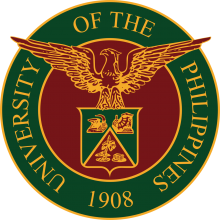
30 Jul 2007
Researchers in the Philippines have revealed that a fast and low cost photographic method is just as effective as the more expensive videographic method in assessing the condition of coral reef benthic communities.

29 Jul 2007
Most of the cross-arms of the 275 kV and 123 kV electricity transmission lines in Malaysia and other countries are made of hard wood. Due to natural weathering the wood decays over time. For safety and maintenance, it is useful to have a simple, accurate non-destructive decay detection system.
Researchers
Sorry, no researchers coming up for this topic.
- « first
- ‹ previous
- 1
- 2
- 3
- 4
Giants in history
Sir Mokshagundam Srinivasa Shastry Vishveshwarayya (15 September 1860 – 14 April 1962) is widely regarded as India’s most outstanding engineer. In a career that spanned almost his entire life, Vishveshwarayya played a pivotal role in several engineering projects, including designing the Krishnarajasagara dam that is still the source of irrigation and drinking water for parts of Karnataka today.
Physicist Narinder Singh Kapany (31 October 1926 – 4 December 2020) pioneered the use of optical fibres to transmit images, and founded several optical technology companies. Born in Punjab, India, he worked at a local optical instruments factory before moving to London for PhD studies at Imperial College. There, he devised a flexible fibrescope to convey images along bundles of glass fibres.
Bacharuddin Jusuf Habibie (25 June 1936 – 11 September 2019) was an Indonesian engineer who was President of Indonesia from 1998 to 1999.
A Japanese surgeon, Tetsuzo Akutsu (20 August 1922 – 9 August 2007) built the first artificial heart capable of keeping an animal alive.
Fazlur Rahman Khan (3 April 1929 – 27 March 1982) was a Bangladeshi-American structural engineer and architect who invented the tube principle, which formed the basis for modern skyscraper design.
Lin Lanying (7 February 1918 – 4 March 2003) was a Chinese material engineer remembered for her contributions to the field of semiconductor and aerospace materials. Lanying was born into a family who did not believe in educating girls and she was not allowed to go to school.
Gregorio Y. Zara (8 March 1902 – 15 October 1978) was a Filipino engineer and physicist best remembered for inventing the first two-way video telephone. Zara’s video telephone invention enabled the caller and recipient to see each other while conversing, laying the foundation for video-conferencing


